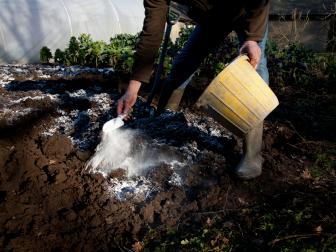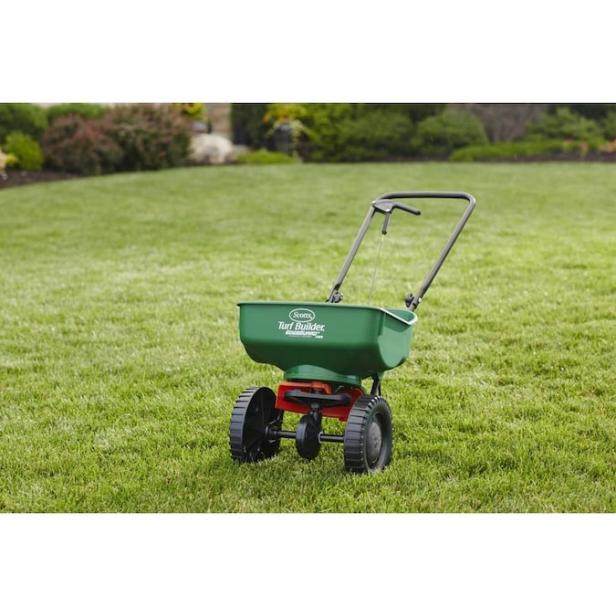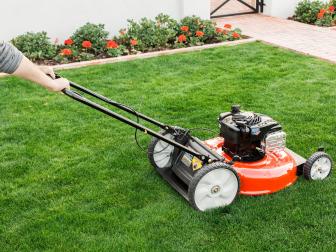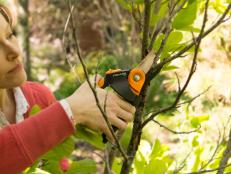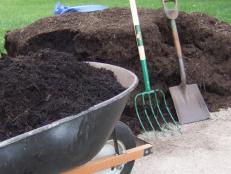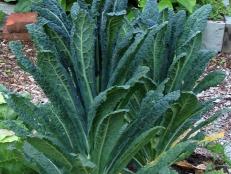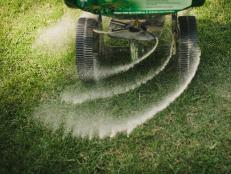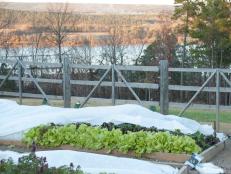Lawn Seeding: How to Plant Grass Seed
To reinvigorate your existing lawn or plant a new one, follow these steps on how to grow grass in the spring and fall.
Turfgrasses are broadly grouped as warm- or cool-season, based upon their optimum temperatures for growth. To plant a new lawn or refurbish an established lawn, consider the season. As fall approaches, start planning to sow cool-season grass. Get ready to sow a warm-season variety when spring is in the air.

Lee Manning Photography
Tools and Materials:
- high quality grass seed
- lime or sulfur
- compost
- fertilizer
- rake
- roller
- spreader
- rototiller
- shovel
- mulch
- water sprinkler
1. Choose Type of Grass
Generally, the warm-season grasses — Bermuda grass, centipede grass, St. Augustine grass and zoysia — grow best in southern areas, since their most vigorous growth occurs above 80 degrees. Where winters are cold, these grasses are dormant after the first frost or freeze. A lawn of warm-season grass turns a light tan shade in winter and greens up again when the weather warms in spring. Pro Tip: For a greener winter lawn while the permanent Bermuda grass or zoysia is dormant, overseed the lawns with fast-germinating perennial rye grass seed in mid-October.
Cool-season grasses — fescues, Kentucky bluegrass and perennial rye grass — are popular for northern-area lawns, where their best growth occurs between 60 and 75 degrees. Early fall is the optimum time to sow a cool-season lawn after summer temperatures have cooled and grass still has ample time to establish a strong root system going into winter. A new lawn of cool-season grasses can be sown in early spring, but will likely require more water and attention than a new lawn started in the fall.
Grass Guide 411
Find out all you need to know about the best types of lawn for your region, lawn alternatives and how to care for your grass.
2. Test Your Soil
Test the soil to determine any deficiencies before you begin. There is a range of at-home soil test kits available or soil samples from your lawn areas can be tested by your county’s extension agency to determine the soil’s pH — the degree of acidity or alkalinity — and levels of phosphorous, potassium and other nutrients. If possible, test the soil four to six weeks before you plan to sow seed in order to know what fertilizers should be added, or whether there is a need to apply lime or sulfur to adjust the pH level.
3. Amend the Soil
Use the results of the soil test to determine the correct amount of limestone or sulfur to apply. Before seeding, spread a 2- to 3-inch layer of compost, either dolomitic limestone or sulfur to adjust pH as necessary, and organic or slow-release fertilizer, following package directions. Mix these amendments into the soil with a rototiller.
How to Amend Soil
Tips for turning less than ideal soil into a planting-rich medium.
4. Rake and Roll
Rake and level the tilled soil, adjusting the soil level to eliminate high and low spots and to slope soil away from buildings. Roll with a heavy water-filled lawn roller to make a firm bed for planting the seed.
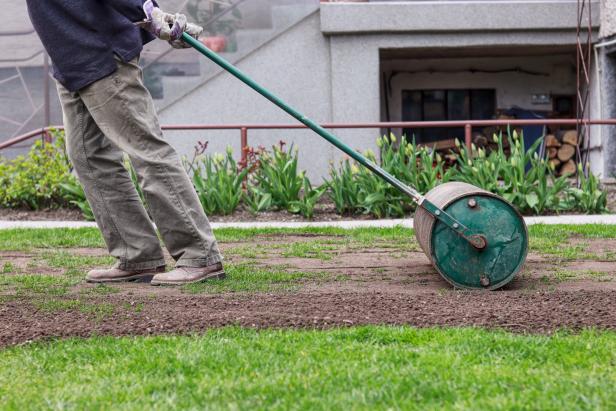
Shutterstock; Vaclav Sonnek
Roll the soil prior to sowing seed to eliminate high and low spots and also slope soil away from buildings.
5. Sow Seed
Use a broadcast spreader to apply seeds at one-half the recommended rate on the package. Sow seed by walking back and forth across the lawn, overlapping rows by an inch or two. Then, walk at right angles to the first sowing to apply the second half of the seed. Roll the seedbed again.
6. Water and Mulch
Cover lightly with mulch, such as chopped straw, to maintain soil moisture and deter birds from eating the sprouted seeds. Avoid hay mulch that contains weed seeds. Water with a sprinkler as needed to keep the soil uniformly moist until seeds germinate and become firmly established. Begin mowing with a sharp-bladed lawnmower when the grass is about 1/3 taller than the desired lawn height. Caution: Avoid using weed-and-feed fertilizer because it may damage newly sprouting grass.
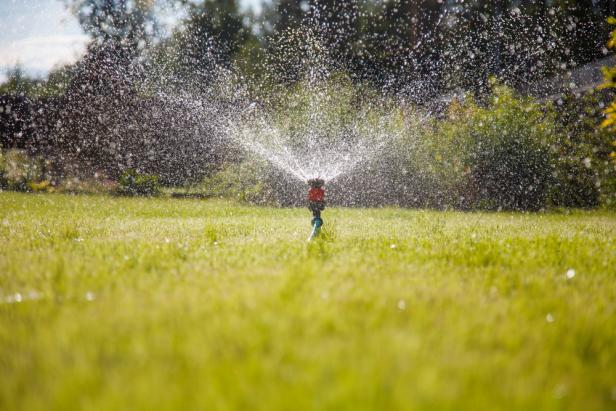
Shutterstock/Kateryna Yakovlieva
Water the sown seed with a sprinkler as needed to keep the soil uniformly moist until seeds germinate and become firmly established.
What Is the Ideal Height to Cut Grass?
Learn the factors that determine ideal grass height and at what height you should be cutting your lawn.








